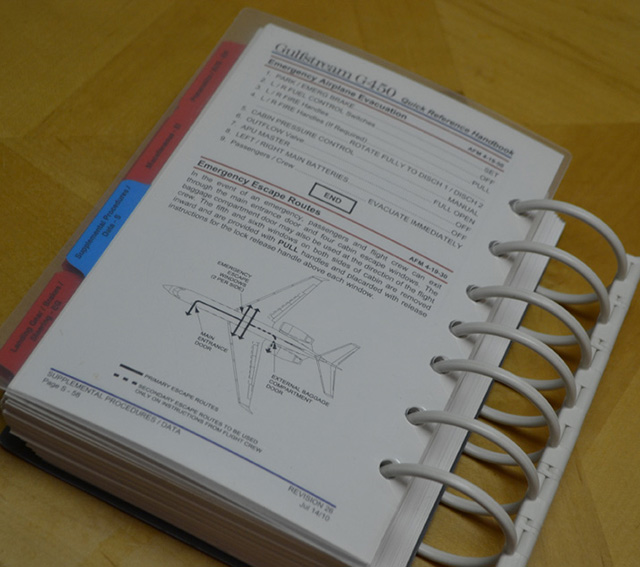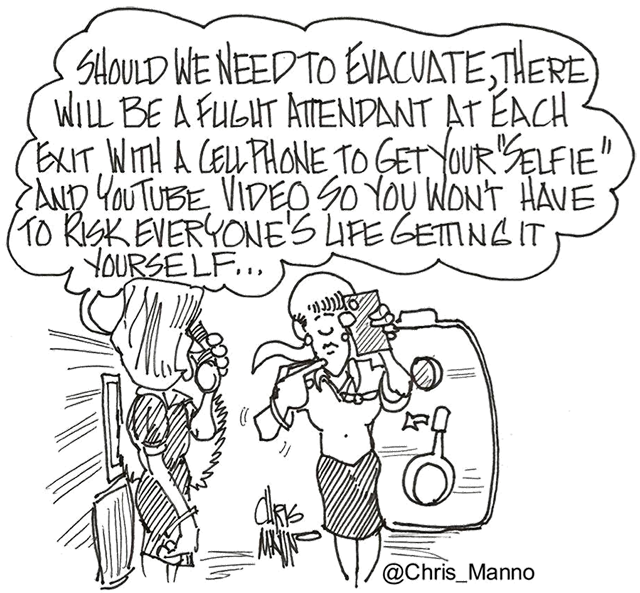We practiced this a few times in the Boeing 747, just because we could. Boeing proved over 300 passengers could be evacuated in four minutes. I twice had to order a ground evacuation of a Boeing 707 and it took nearly that much to get rid of fewer than 40.
— James Albright

Updated:
2019-09-10
Procedures obviously differ by aircraft and operator; you should practice these in the simulator regularly.
If you have time to plan, get the flight attendant involved. If you don't have a flight attendant, pick a passenger to do as much as you think advisable. Even if you don't think they can handle it, they need to have a plan if the two occupants up front are disabled.
For an unplanned evacuation you should have a few things memorized and you should also have a quick reference checklist easily available. In a previous aircraft I laminated the checklist and put it on the yoke. In the Gulfstream world it has become easier. They put in on the back page of the Quick Reference Handbook and made the cover clear.

1
Flight attendant notes
- Receive situation briefing from PIC.
- Brief passengers, get them started on personal preparation (below).
- Prepare the cabin (below).
- Once aircraft has stopped assess the conditions and say: "Stay seated, stay seated, I am opening an exit."
- To command the evacuation:
- "Open your seat belts"
- "Come this way"
- "Come to my voice / flashlight"
- "Leave everything"
- Pick an exit.
- At a window exit:
- "Step up, step through"
- "Leg, body, leg"
- "Run away from the aircraft"
- During an evacuation passengers may become incapacitated. Evacuate the able bodied first, seek their assistance to help those who need it.
- Tell the first person to exit to assist other passengers and send them away from the aircraft.
- Count those evacuating to ensure all are accounted for.
- Bring the medical kit, blankets, coats, if time permits.
2
Preparation (if times permits)
Secure Cabin
- Seat backs upright, seats tracked to their approved positions, stow tables.
- Remove dangerous objects from passengers (stow eyeglasses in a sock or seat pocket).
- Stow all loose articles, anything that could become a projectile (lap tops, service dishes, flowers, etc.)
- Duct tape all galley sliding doors.
- Dim lights just prior to landing.
Preposition Needed Assets
Place medical kit, blankets, and extra flashlights in a bag and stow securely.
Personal Preparation
- Void bladder.
- Remove jewelry, watches, stockings, etc.
- Change into pants and long sleeve shirts made of natural fibers (denim, cotton).
- Wet hair to remove flammable hair products.
3
Evacuation
- Execute aircraft specific procedures, such as G450 Ground Evacuation.
- Once the aircraft is stopped, assess the environment and select an evacuation exit.
- Redirect passengers to the selected exit.
- Beware of fire, debris, rescue vehicles, and other obstructions outside the aircraft.
Once outside the aircraft
- Assemble all passengers at least 100 yards upwind of the aircraft.
- Do not permit anyone to smoke.
- Do not allow anyone other than rescue personnel to enter the aircraft
- Treat the injured, as necessary.
References
(Source material)
Please note: Gulfstream Aerospace Corporation has no affiliation or connection whatsoever with this website, and Gulfstream does not review, endorse, or approve any of the content included on the site. As a result, Gulfstream is not responsible or liable for your use of any materials or information obtained from this site.

